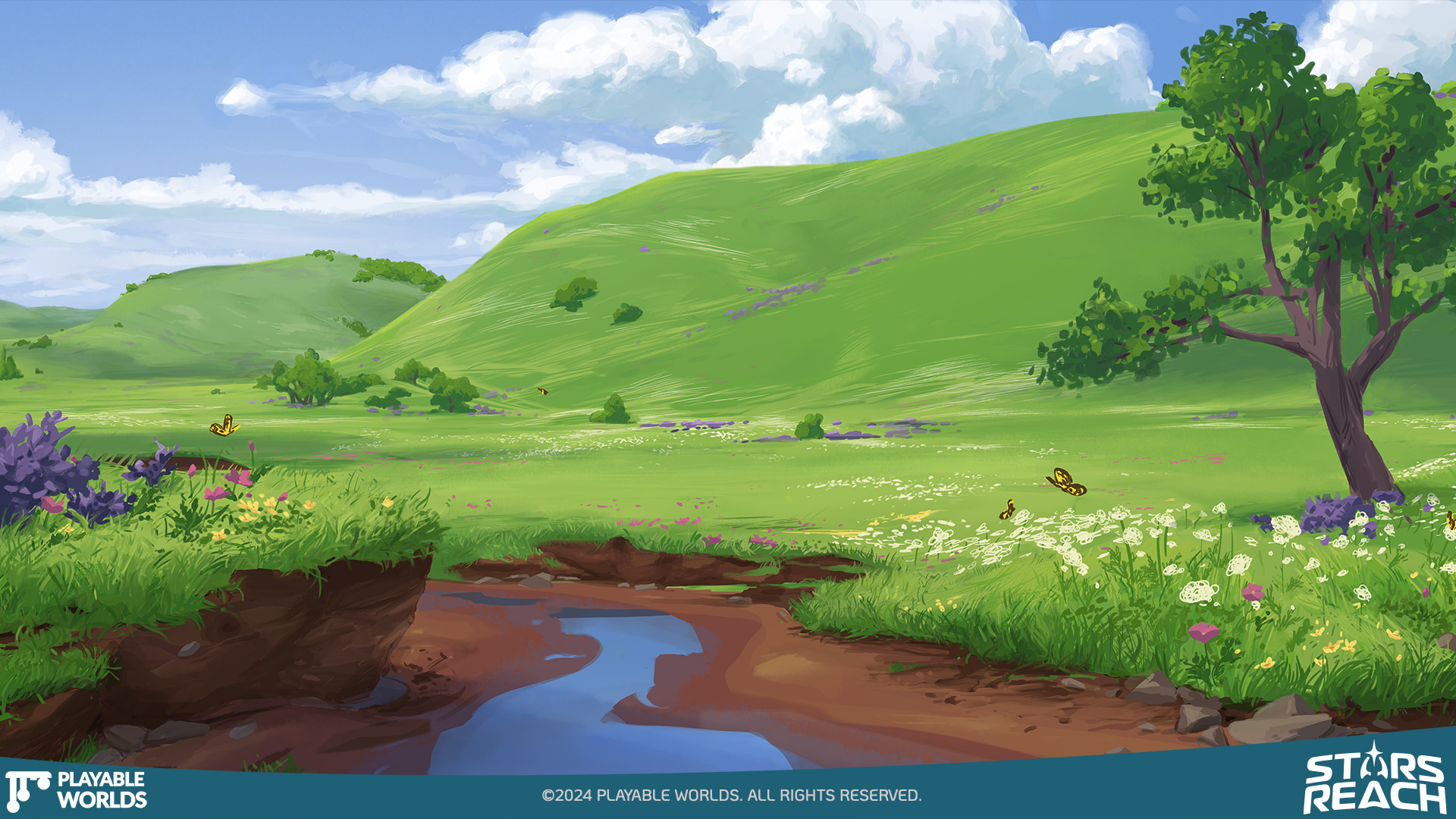by Raph Koster
It might be hard to believe now, but a couple of decades ago, plenty of designers didn’t think that games could be art. They didn’t think that there was any greater meaning, that it was enough if games were just fun and didn’t have anything more to them.
These days, we have a lot more awareness that games can mean something, carry artistic statements, and can do while still being fun. In fact, one of the standard ways of thinking about game design now is to start with the idea that you want to evoke a particular experience for the player.
That calls for knowing what your game is about. This then cascades into knowing who your game is for, because no one game can be for everyone.
For years now, I have used a little vision exercise in order to help clarify thoughts around this issue. It consists of just four questions that you can ask of the game that help tie together the thematic side of the game with the game rules and mechanics.
Games where these two don’t match often don’t “feel right.” You end up feeling like you are going through the motions in some storyline but really are just popping XP bags for loot.
WHAT IS THE GAME ABOUT (THEMATICALLY?)
After ruining our homeworlds, we are given a second chance to learn to live in harmony with one another and with the natural world as we venture forth into the galaxy.
In our lore, humans of various sorts are all the result of genetic engineering experiments conducted by the Old Ones, a powerful and long-vanished galactic civilization. But we now have done what you’d expect of humans (we’re only human after all): we’ve made a mess. Whether it’s global warming, peak oil, nuclear winter, or global pandemics, we have managed to ruin the planets from which we come.
This game is about different sorts of people learning to get along, and to learn how to steward what we have. Crucially, this is a lesson that the Old Ones themselves, for all their power, don’t seem to have learned themselves.
It’s all fine and dandy to say that this is what we want the game to be about, but that means that what the player can actually do has to line up to these goals. There have to be game systems that offer second chances, game systems that teach us to live in harmony with each other, and game systems that represent the natural world and how we interact with it. So we ask the next question:
HOW DOES THE PLAYER DO THAT (THEMATICALLY?)
Diverse groups of people with very different ways to play come together to build new societies, and grapple with the problems of building sustainable space settlements.
More features the game needs start to crystallize now. In order to learn to live in harmony, we need difference. The game has to supply multiple ways to play which sit at comparable levels of importance. It’s not that it needs to appeal to everyone, but that it needs to support a spread of player types that help each other mutually survive.
Similarly, if we want to provide players with a laboratory about stewarding the world, then there need to be game mechanics that relate to that goal. The game itself needs to put the idea of sustainable settlements front and center. If we built a typical MMORPG where stuff repops infinitely, then this question would never even come up!
As you can see, game systems start to take shape from these questions, because the theme demands them. And already, they are forcing us to do things differently than most MMOs do.
So now let’s ask the same questions but in a different way. Until now, we have been framing these within the fictional context, within the fantasy. What do the above answers turn into if we think of them in raw min-maxing numbers?
WHAT IS THE GAME ABOUT (MECHANICALLY?)
Players work together to maximize their economic standing and in-game investment without destroying the resource pools they draw from as they build up their in-game investment and social groups.
Now we are really into system design! This description is the same as the thematic one, but it’s framed up in terms of goals and currencies and rules. We need a game where players are working through progression systems like usual, but collectively, not just on their own. That suggests some sort of system of collaborative progress, where the diverse types of players all are pushing towards similar meta-game goals.
There’s a classic collaborative game mechanic that is perfectly suited to that, which is often called “barn-raising” in game design circles. Think of it as a collective goal that every player can contribute to individually, even while they pursue their own interests. This idea will serve as the backbone to our player government system: players in Stars Reach will work together to improve and progress their planets from wilderness to settlements and thence to cities and planetary governments.
The second half is far trickier. We want the players to engage in this activity but also have to be good stewards of the resource pools available. By this we mean the ores, the wood, the creatures they fight, and so on. This idea led us to the idea that planets must be capable of being destroyed – but also revived. That they should have health bars, so you can see how you are doing in managing them.
Players have to be able to see, at every moment, that what they do matters to the game environment. And from that powerful idea comes the entirety of the living world simulation that underlies Stars Reach.
So that’s goals… what about the moment to moment? Well, we can once again ask the same question we did previously, but through a game rule lens rather than within the fiction:
HOW DOES THE PLAYER DO THAT (MECHANICALLY?)
Players form economic dependencies on each other’s characters by advancing in diverse specializations and skills, all of which draw from the common exhaustible resource pools available in each zone, thereby creating a Tragedy of the Commons problem to navigate as a group.
We rely on players being self-interested! If we have every player out for themselves, and many ways to play, we can have all the ways to play depend on the resources in the world.
Then we can make the players loosely dependent on one another. Oh, not on specific individuals necessarily – we want to preserve the ability to play the game solo, as part of our pillar on accessibility. But economically, by having one playstyle rely on the existence of another playstyle.
This concept becomes the map of our player-driven economy. Combatants need someone out there who makes blasters. Crafters need someone out there who mines the materials for blasters. Miners need someone out there who maps these alien worlds and finds the deposits of rare minerals. And explorers need those combatants to keep them safely out of the bellies of giant carnivorous mushrooms.
If we instead made looting monsters the supplier of all economic value, then all economic power would flow from combat. Our thematic message would be lost. We want players to be thinking about the fact that it takes all sorts of people to build a society.
We have one special advantage in approaching things this way: The Tragedy of the Commons is a lie. The basic premise of the idea was that given human actors and a common resource, some asshole is always going to hog it all for themselves and ruin it for everyone else. And in fact, we have seen plenty of people who hear about our game and assume that griefers will inevitably win out here too, digging up every scrap of the landscape and ruining the planets for everyone else.
But… in reality, humans have successfully managed commons for millennia. In fact, a Nobel Prize was awarded to Elinor Ostrom for her thorough refutation of the concept.  The only time that the Tragedy of the Commons comes true is when you accept the premise in the first place!
The only time that the Tragedy of the Commons comes true is when you accept the premise in the first place!
All that is needed is for the players to have the tools to collectively manage their space. We as a team definitely need to nail that aspect. And then, yeah, it gets hard, because trying to solve for everyone’s competing needs and desires means a lot of compromising and negotiation and tough choices.
Well, in a game, negotiation and tough choices are called gameplay. We as designers need to give you the tools to manage the space and prevent the one griefer from using up your commons. But after that, it’s on you, the players, to figure out how to solve the larger problem of allocating the resources, deciding how much to build up your world at the price of losing your wilderness, and so on.
In the end, we hope that we see players land at many solutions for this, not one. We at Playable Worlds are not trying to be prescriptive about it. Instead, we want to see the thousand solutions this vast laboratory creates. And sure, some of those attempts will most assuredly end in strip-mined planets cooked down to the bare bedrock. That’s okay. We have procedural, simulated worlds. If you wreck one, we can just generate another.
So yeah, Stars Reach is kind of a climate change metaphor. It’s a political metaphor. Remember, it’s about different sorts of people learning to get along, and to learn how to steward what we have.
Games can have greater meaning. And that meaning can matter well outside the game. If any one of those solutions you try out for fun on our infinite planets works out, we hope that maybe you can turn around and apply it to the real world.
Because we only get one of those.


